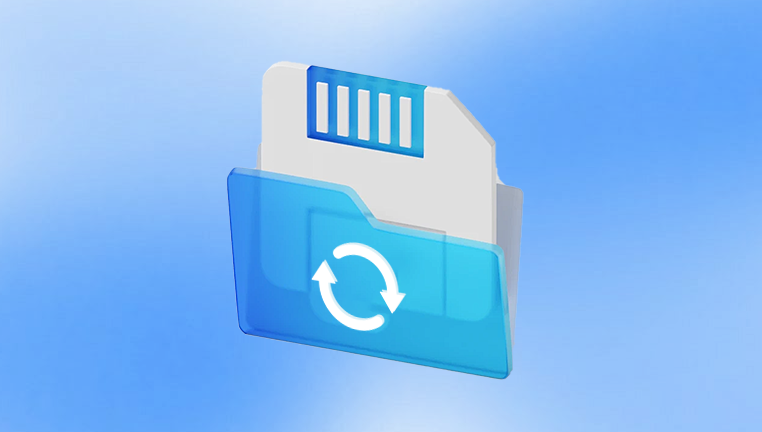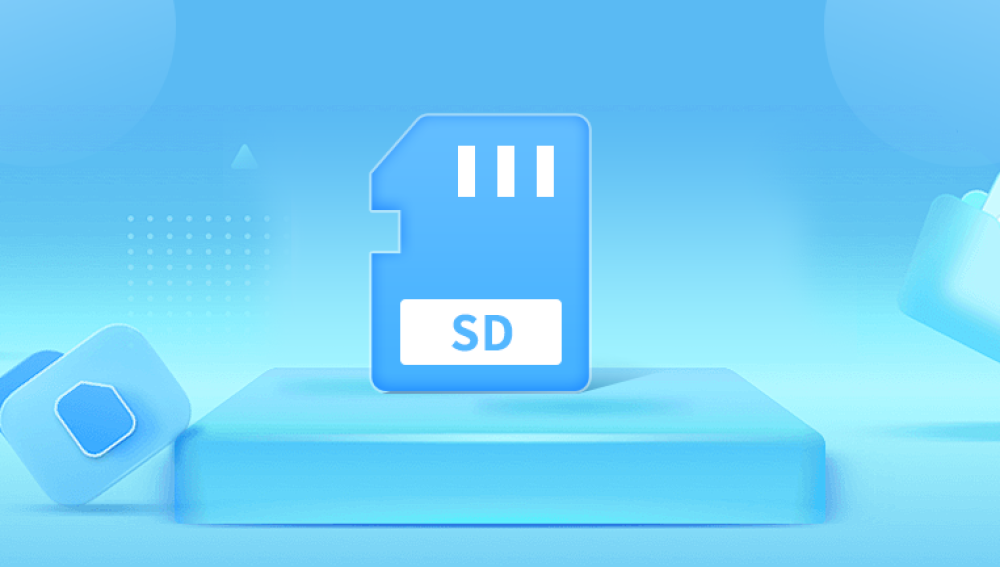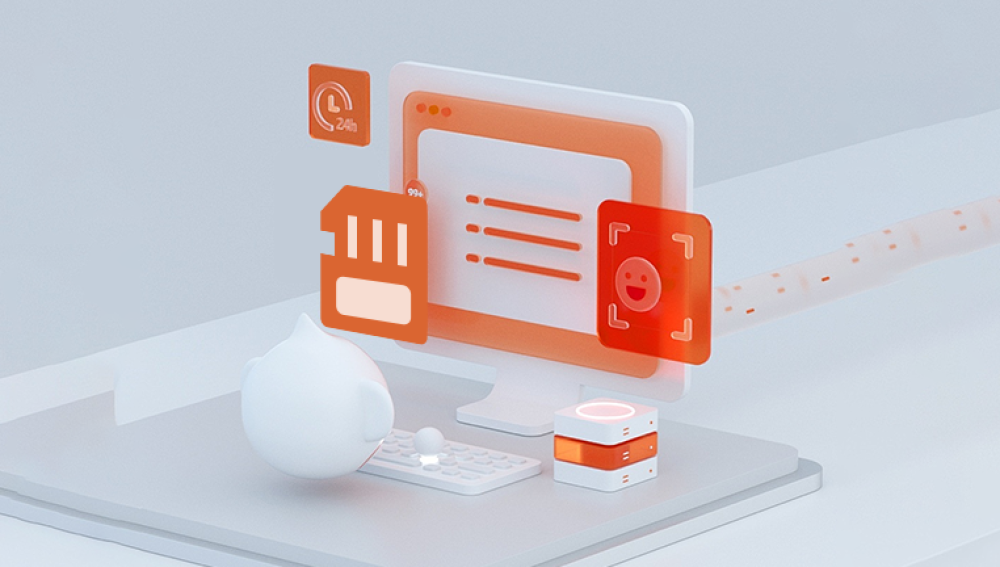These small yet powerful storage devices are staples in smartphones, cameras, drones, and camcorders, holding everything from wedding footage to vacation videos and professional recordings. However, as versatile as they are, SD cards are not immune to problems accidental deletions, formatting errors, file corruption, and physical damage can all lead to the loss of precious video content.
When you delete a video or format the card, the data isn’t immediately erased. Instead, the space is marked as available for overwriting. The actual video files remain on the card until new data takes their place. This is the key reason why you can still recover deleted or formatted videos if you act fast and avoid using the card further.
Common Reasons Videos Are Lost from SD Cards
Understanding why data loss happens can help you prevent it in the future and identify the best recovery strategy. Here are the most common causes:

Accidental Deletion: A simple mistake like pressing "Delete" or "Format" can remove all video files in seconds.
Formatting Errors: Sometimes, devices prompt users to format an SD card due to compatibility issues or corruption.
File System Corruption: Improper ejection, power loss during transfers, or virus infections can corrupt the SD card’s file system.
Physical Damage: Bending, exposure to water, or extreme temperatures can make an SD card unreadable.
Device Malfunction: Cameras or phones that freeze or crash while writing video files can result in incomplete or missing footage.
What to Do Immediately After Video Loss
The first few actions you take after realizing you’ve lost video files can dramatically affect your chances of successful recovery. Here are essential tips:
Stop Using the SD Card: Any further use can overwrite the deleted files. Remove it from your device immediately.
Avoid Formatting: If prompted to format the card, decline. Formatting can complicate recovery efforts.
Do Not Copy or Add New Files: Avoid any write operations on the card, as they can reduce the recoverable data.
Store the Card Safely: Protect the card from physical damage until you begin the recovery process.
Choosing the Right Recovery Method
There are several ways to recover deleted or lost video files from an SD card. The best method depends on the nature of the loss and your technical comfort level. Here’s a breakdown of your options:
1. Use Data Recovery Software
For most users, this is the easiest and most effective method. Several reliable tools are designed specifically for restoring deleted videos from SD cards. These programs work by scanning the raw memory sectors of your card to locate files that haven’t yet been overwritten.
Drecov Data Recovery
Accidentally deleted a cherished video or lost footage due to a formatted or corrupted SD card? Drecov Data Recovery offers a reliable and user-friendly solution to restore lost videos from SD cards used in smartphones, cameras, drones, and other devices. Whether your files were erased unintentionally or your SD card became unreadable, Panda is designed to recover videos quickly and efficiently.
When a video is deleted from an SD card, the file isn’t immediately wiped—it’s simply marked as available space. Drecov Data Recovery scans deep into the card’s memory sectors, identifying recoverable video files before they are overwritten. It supports a wide range of video formats including MP4, MOV, AVI, and more, and works seamlessly with SD, SDHC, and microSD cards from all major brands.
Using Drecov Data Recovery is simple. Connect your SD card to a computer using a card reader, launch the software, and select the SD card as your target drive. After scanning, the software will display all recoverable video files. You can preview them before restoring, ensuring you retrieve the exact footage you need.
Panda also handles recovery from formatted, corrupted, or even inaccessible SD cards, making it a go-to tool in emergency data loss situations. Its clean interface and intelligent scan technology make video recovery accessible to both beginners and professionals alike.
Step-by-Step: Recovering Videos with Software
Download and Install the Software: Choose a recovery program compatible with your operating system.
Insert Your SD Card: Use a card reader for better compatibility.
Select the SD Card: Launch the program and choose the SD card as the target for scanning.
Run a Deep Scan: Perform a thorough scan to detect lost or deleted video files.
Preview and Recover: Once the scan is complete, preview the files if possible, select the videos you want to recover, and save them to a different drive (not the SD card).
2. Restore from Backup
If you regularly back up your devices, you may already have a copy of the missing video.
Check Cloud Services: Google Photos, iCloud, Dropbox, and OneDrive often back up media automatically.
Look on Other Devices: If you transferred the video before it was lost, check external hard drives, computers, or other memory cards.
3. Use Command Prompt (For Advanced Users)
In Windows, the Command Prompt can sometimes help recover files from a corrupted SD card.
cmd
CopyEdit
chkdsk X: /f
Replace “X” with your SD card’s drive letter. This command checks for file system errors and attempts to fix them. While it’s not a recovery tool per se, it can help make a card readable again.
4. Professional Data Recovery Services
If your SD card is physically damaged or software fails to recover the videos, it may be time to call in the experts. Data recovery professionals can work with physically compromised cards in a clean room environment, using advanced tools to extract data.
This option can be costly, often ranging from $200 to over $1000. but it may be the only way to recover critical footage.
Tips to Increase Recovery Success
Act Quickly: The longer you wait, the higher the chance your deleted files will be overwritten.
Use Reliable Recovery Software: Not all tools are created equal—some may do more harm than good.
Avoid Free Tools with Poor Reviews: Some free software can be malware in disguise. Always download from official sites.
Recover to a Different Drive: Never save recovered files back to the SD card you’re recovering from.
Try Multiple Tools: If one tool doesn’t find your videos, another might. Different algorithms can detect different file signatures.
Preventing Future Video Loss
While recovery is possible, prevention is always the best approach. Here are steps to protect your videos from being lost again:
Back Up Regularly: Always keep a second copy of important videos, either in the cloud or on a physical drive.
Handle with Care: Avoid removing the SD card while it’s in use or during file transfers.
Don’t Ignore Warning Signs: Frequent errors, missing files, or unusually slow performance may indicate that your SD card is failing.
Use Quality SD Cards: Reputable brands like SanDisk, Samsung, and Lexar are less likely to fail than cheap, no-name alternatives.
Format in the Device: Always format the card in the device you’ll use it in, not your computer, for better compatibility.
Avoid Filling the Card to Capacity: Keeping at least 10-15% of the card free reduces the chance of write errors and corruption.
Recovery Scenarios: What to Expect
Every recovery case is different. Here are a few common scenarios and what you might realistically expect:
Accidental Deletion
If you delete videos but don’t add anything new, chances of full recovery are very high. Most recovery software will retrieve the files intact, including metadata.
Formatted SD Card
If the card was quick-formatted (the usual method), recovery is still likely. A full format, however, overwrites sectors and lowers success rates.
Corrupted SD Card
Recovery depends on the extent of corruption. Logical corruption (file system errors) can usually be fixed with scanning and software. Severe corruption may require specialized tools.
Physically Damaged Card
This is the most difficult situation. If the damage is limited to the plastic housing or pins, sometimes recovery is still possible with a reader. If internal memory is compromised, professional recovery may be needed.
Myths About SD Card Video Recovery
Let’s debunk some common myths that may lead users down the wrong path:
Myth 1: Formatting always erases everything permanently – Not true. Quick formats don’t overwrite the data. Files remain recoverable.
Myth 2: Recovery software can fix physically damaged cards – Unfortunately, software can’t help with hardware failure.
Myth 3: Recovered videos will be corrupt or unwatchable – If recovery is successful, most videos play normally, especially in formats like MP4. MOV, and AVI.
Myth 4: It’s safe to keep using the card after deleting files – Using the card after deletion risks overwriting the very data you’re trying to recover.
Special Cases: GoPro, Drone, and Dash Cam Videos
Devices like GoPros, drones, and dash cams often use unique video file structures or split long videos into segments. Here’s how to deal with them:
GoPro: Files are often stored as .MP4 with split naming (e.g., GH010001.MP4). Recovery tools that support fragmented video recovery offer the best results.
Drones: DJI and other drone cameras sometimes use proprietary encoding. Look for tools that support raw video recovery or drone-specific formats.
Dash Cams: Continuous loop recording can make recovery tricky. Stop using the card immediately and use software that recognizes dash cam formats.
What If the Videos Can’t Be Recovered?
In rare cases, recovery may not be possible. This can happen when:
The card has been overwritten extensively.
The memory cells are physically damaged.
The file signatures are too fragmented or corrupted to reconstruct.
If this happens, it’s worth seeking professional help. Labs with advanced imaging and chip-off recovery techniques may still be able to extract your data.
Losing videos from an SD card can feel devastating, but it’s not the end of the road. With the right approach, tools, and mindset, it’s often possible to restore what was lost—sometimes even entirely. Whether it’s a personal memory, professional footage, or irreplaceable event recording, your videos matter.
Act quickly, choose the right tools, and above all, treat your SD card with care from the moment you suspect data loss. And once your files are safely recovered, take a few extra minutes to set up a robust backup system. Your future self will thank you.




